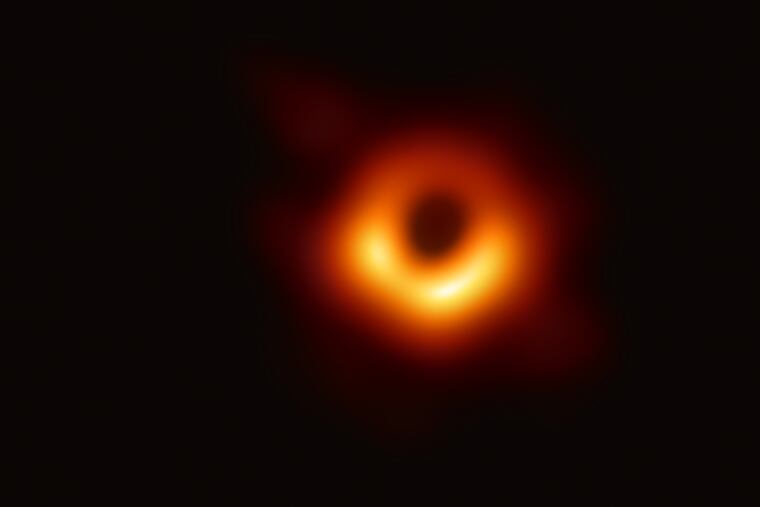First picture of a black hole released: ‘We have seen ... the unseeable'
This black hole is 55 million light years from Earth and has a mass 6.5 billion times that of the sun.

Astronomers have studied and discussed black holes for years, but never saw one — until Wednesday.
Capping years of work, scientists working together on the Event Horizon Telescope project released a photo of the black hole at the center of Messier 87, a massive galaxy in the nearby Virgo galaxy cluster.
This black hole is 55 million light-years from Earth and has a mass 6.5 billion times that of the sun, according to the National Science Foundation.
The image was constructed from data collected by eight radio observatories on six mountains and four continents over a 10-day period in April 2017.
“Black holes are the most mysterious objects in the universe,” Sheperd Doeleman, project director of the Event Horizon Telescope, said at a news conference. “We have seen what we thought was the unseeable.”
The event horizon in the image is the boundary between light and dark around a black hole, the point where the gravity of the black hole becomes so extreme nothing that enters can ever escape.
At the center of the black hole, time and space become so curved upon themselves that the laws of physics break down completely.
The existence of black holes had been predicted by Albert Einstein’s 1915 theory of general relativity.
The just-released picture is no way like a typical photograph, said Joey Neilsen, assistant professor of physics at Villanova University, who assisted in the project along with one of his students, Jadyn Anczarski.
It is a reconstruction based on millions of gigabytes of data, including radio waves and light, gathered by the eight telescopes in the project, he said.
Neilsen noted it would take a telescope the size of the planet Earth to see a black hole, “and in a way, that’s what they did.”
An important takeaway from the image is that its circular shape is one more thing that supports Einstein’s theory of relativity, he said.
“But seeing a black hole is the real breakthrough,” Neilsen said. “Being able to see something gives a foothold in understanding how things work.”
He added, “It’s kind of moving to see."
Besides the image, scientists now have data stored on half a ton of hard drives to mine in efforts to understand the universe, he said.
Scientists and space explorers celebrated the photo’s release.
“Einstein, we rejoice in your brilliance,” Chris Hadfield, a Canadian astronaut, tweeted.
Katie Mack, an astrophysicist with a wide social-media following, expressed surprise at the clarity of the image, calling it “better than I expected!”
The New York Times turned to The Lord of the Rings to describe the picture.
“The image, of a lopsided ring of light surrounding a dark circle ... resembled the Eye of Sauron, a reminder yet again of the power and malevolence of nature. It is a smoke ring framing a one-way portal to eternity," Times reporter Dennis Overbye wrote.
The Academy of Natural Sciences in Philadelphia could not resist the Lord of the Rings allusion and went to the script of the film version of The Fellowship of the Ring for a suitable tweet.
For anyone interested, that bit of dialogue between Saruman and Gandalf also goes on to describe the Lord of Mordor as “a great eye, lidless, wreathed in flame.” Sounds pretty much like the image of that black hole in Messier 87.
Correction: This story was revised to fix the date of Einstein’s Theory of General Relativity. It was 1915, not 1905.